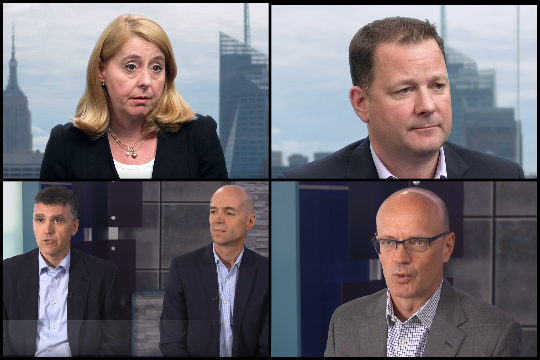
The numbers show the benefits of investing for the long term, but when faced with the impact of a largely unpredictable event, can a long-term strategy be maintained?

The numbers show the benefits of investing for the long term, but when faced with the impact of a largely unpredictable event, can a long-term strategy be maintained?
Events of the past century tell us that markets almost always recover in the long run. This does not mean that investors should ignore short-term circumstances, nor does it mean they should abandon well-crafted plans for the future. Recent research and anecdotes from global investors confirm that flexibility is key for institutional investors, whose objective is to manage risks and return in portfolios across multiple time horizons. Even those plans with decades-long liabilities must confront the concerns of the moment. Outlining the purpose, goals and parameters of a fund leads to a deeper understanding of the fund’s true risk tolerance and provides conviction to maintain a long-term outlook in the face of market stress, such as that presented by the outbreak of COVID-19. There are a number of structural and tactical ways that funds can achieve manage both for the long term and through the short term.
Portfolio rebalancing policies continually adjust a fund’s actual asset allocation toward its long-term targets. Boards can implement a policy to automatically rebalance to targets after large market movements to prevent the portfolio from falling outside preset boundaries. Rebalancing policies can offset short-term market movements by buying low and selling high. Committing to countercyclical behavior ahead of stressful events can relieve the pressure of making decisions quickly and during difficult market conditions. Even if such commitments have not been made prior to the COVID-19 event, investors can consider the issue of rebalancing from this point forward.
Setting aside a portion of the portfolio in short-term funds earmarked for immediate needs provides confidence that the fund can meet obligations even in difficult market conditions, like the fallout from COVID-19. At the same time, set-asides allow the board to focus the remainder of the fund on investments with a long-term time horizon. This strategy may make the risk easier to bear and, in turn, the long-term commitment easier to maintain.
From a contractual standpoint, lock-ups compel investors to commit to a minimum time period by putting a price tag on selling early. Amid the temptation of changing investment strategies in the face of a “black swan” event, having a lock-up makes it impossible, or at least very costly, to do so. While lock-ups are common in illiquid areas such as private equity or infrastructure, secondary markets can increase the temptation to sell at the wrong time. Understanding the real costs of getting out of a lock-up is critical.
Behaviorally, investors will feel pressure to act when confronted with losses but sometimes ignore high risk in an outperforming portfolio. Instituting situational reviews can moderate this tendency. For example, an investor might review a portfolio allocation if returns have exceeded expectations by 5%. Once these parameters are breached the investment strategy can be reevaluated, but this prevents over (or under) reaction to fluctuations due to previously unforeseen events, such as those caused by a global pandemic.
Decision tracking, such as reporting on the performance of the current asset allocation relative to prior ones, may shed light on the benefits of changes to a portfolio. Asset allocators track the positions they actually own, but less often consider what they have chosen to exit or avoid. Having this reference point can prove advantageous when evaluating new decisions in times of market instability. Of course, any such tracking mechanism works best when it is used to encourage continuous improvement and understand strategic advantages, rather than to lionize or vilify past decisions or decision-makers.
Our current reality demands that investors remain agile and able to deal with the present while planning for the future. It is important to be well-capitalized to get through short-term economic shocks and to take advantage of the unique opportunities that they present. But those investors who do this while recognizing that markets will recover over time and who keep their capital focused on the long term will prosper.

Strategy | Report
21 December 2018 - Boards and executives of long-term funds, such as pension plans, sovereign wealth funds, and endowments, have a challenging problem. They need to manage those portfolios to meet their long-term purpose, which may be decades or more into the future. Yet no fund has the luxury of looking only to that long-term time horizon. Each must also meet expectations in the near term in order to continue in its role and with its investment strategy.

Strategy | Toolkit
21 December 2018 - To facilitate discussions about managing portfolios to both meet long-term objectives and weather short-term risks, FCLTGlobal, with input from its members, has developed this Risk Conversation Guide for boards and staff. We have provided illustrative answers to these questions, but these are not intended to be exhaustive or comprehensive.

Strategy | Video
23 March 2020 - Interviews from our members on how they assess, manage, and plan for long- and short-term portfolio risk.